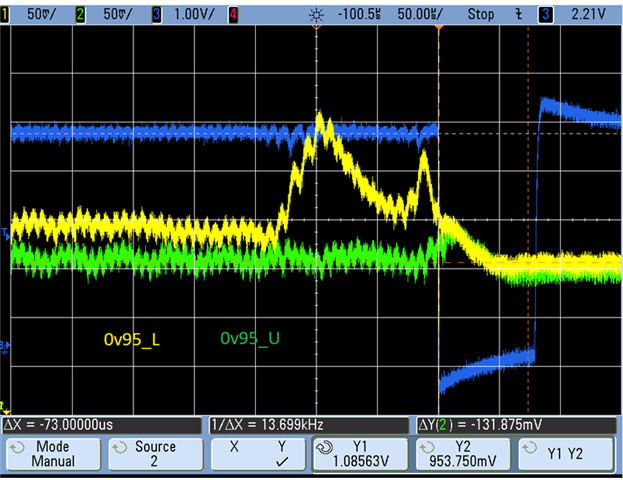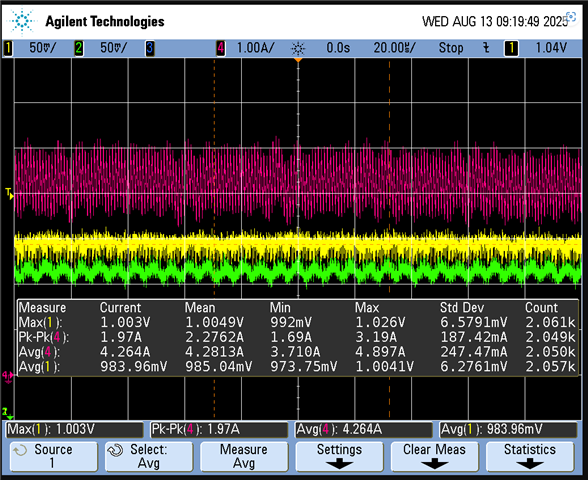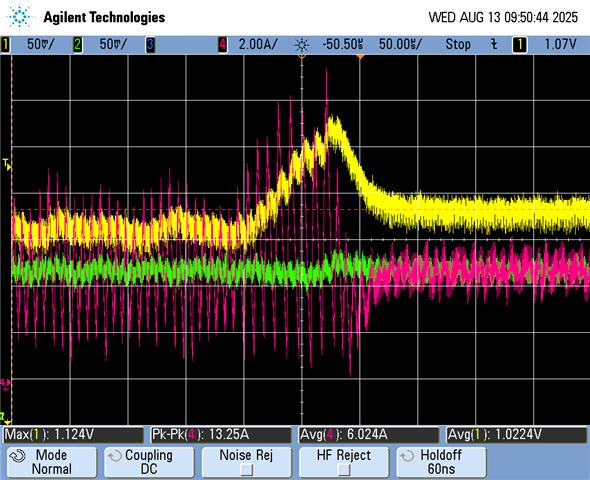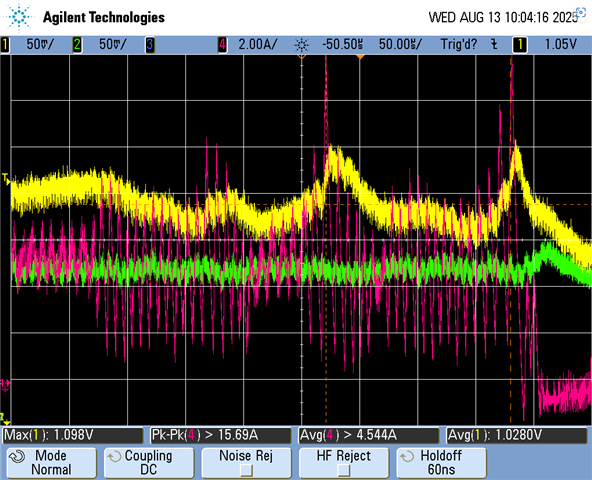Other Parts Discussed in Thread: TPS62872, TPS6287B15, TPSM8287A12
Tool/software:
To whom it may concern,
In my current project, I’m using two LM21212MHE-2/NOPB devices to power two independent FPGAs. I’m encountering an issue where, at higher temperatures, one of the DCDCs flags a Power Good (PG).
This issue is not consistently associated with the same DCDC. On some boards, it affects the DCDC1, while on others, it affects the DCDC2. Since both Power Good signals are tied together, a fault in either DCDC shuts down the entire power supply.
Attached is a scope capture showing the moment when the Power Good signal is asserted low:

I suspect that the Over-Voltage Protection (OVP) was triggered, causing the Power Good signal to assert low. This behavior is only observed at elevated temperatures (around 70 °C as monitored by the FPGAs). At room temperature, no issues have been reported.
In our application, each rail is delivering approximately 6 A to the loads.
Yellow represents the output voltage of one of the DCDCs, Green represents the output voltage of the other DCDC, and Pink shows the output current of the Yellow DCDC @50C:

Yellow represents the output voltage of one of the DCDCs, Green represents the output voltage of the other DCDC, and Pink shows the output current of the Yellow DCDC @65C: 
Moment when the power good is active low and DCDC disactivated @65C: 
Based on the captured waveforms, the output ripple appears to increase with temperature. Have you encountered this behavior before?
PSpice simulations indicate that the design has a good phase margin, about 60°.
Thanks in advance,
Filipe Costa

